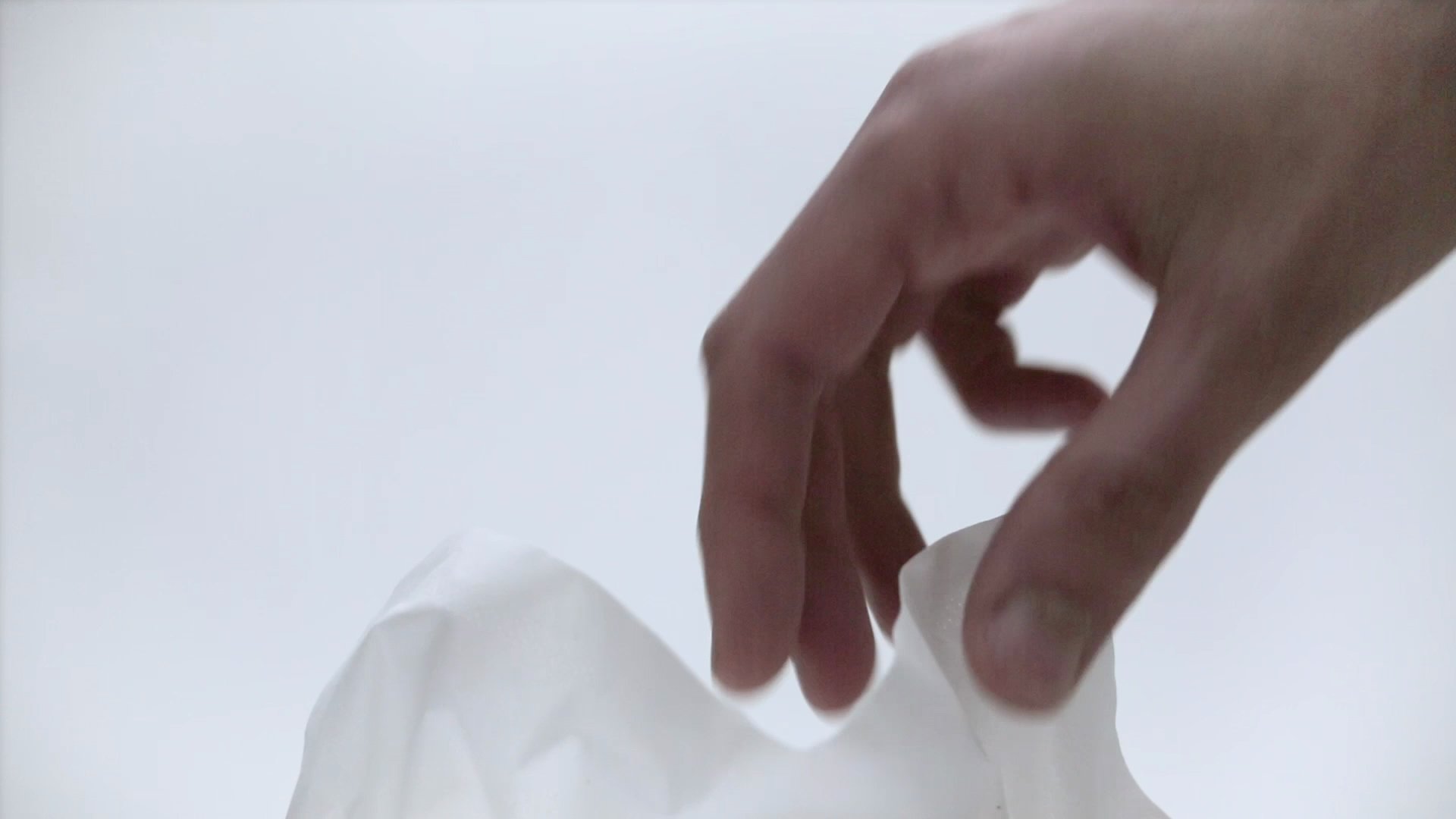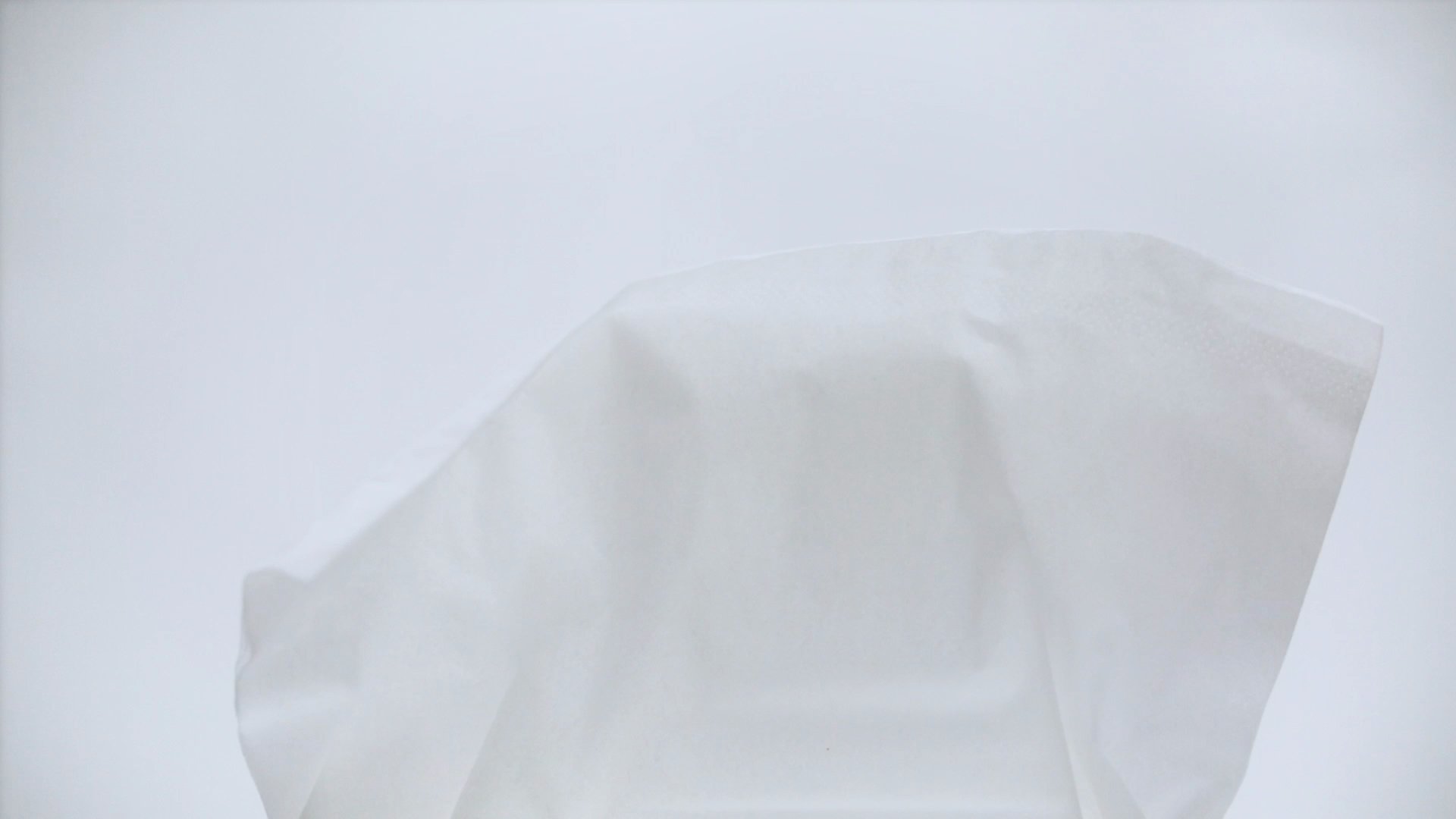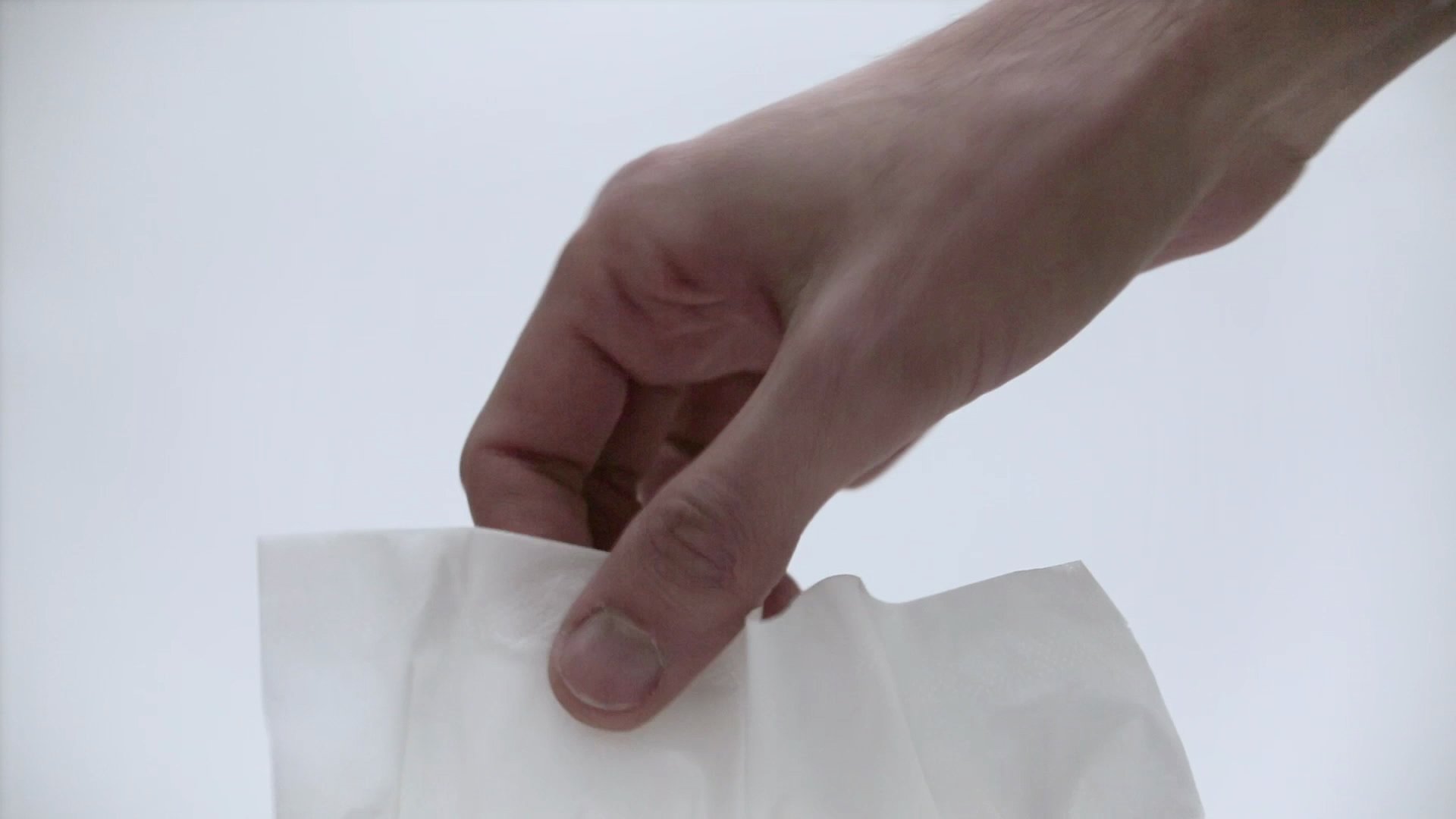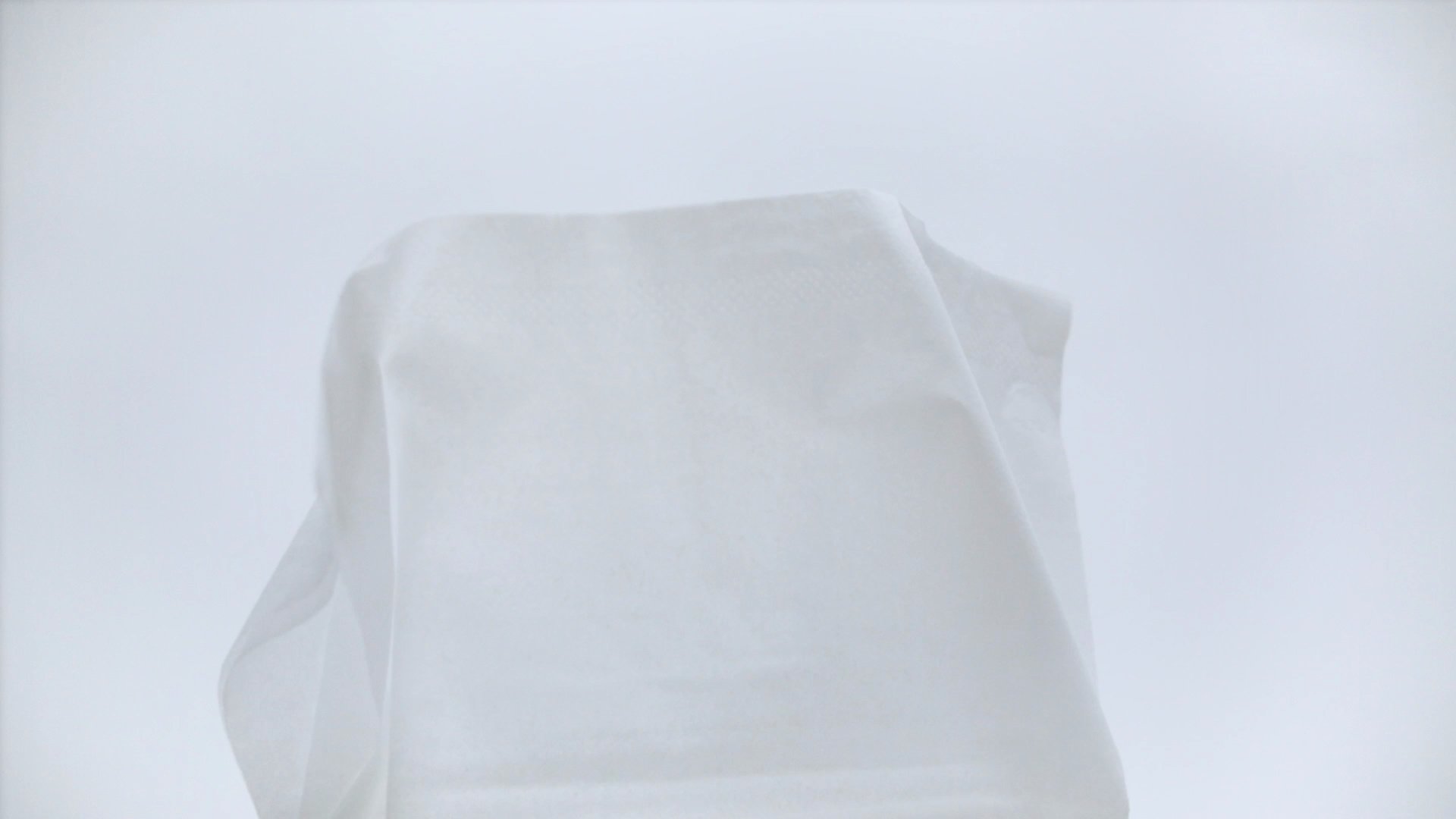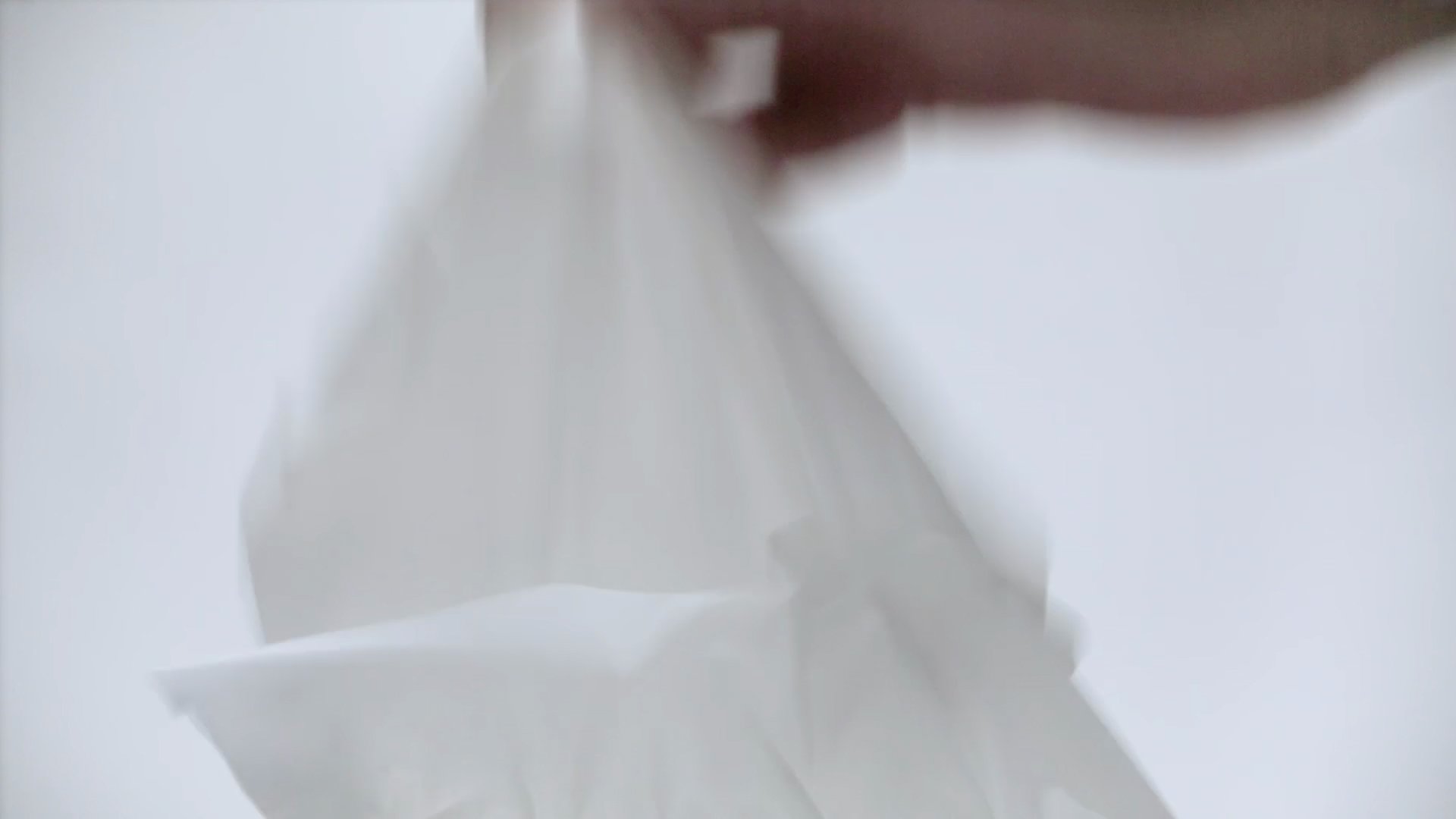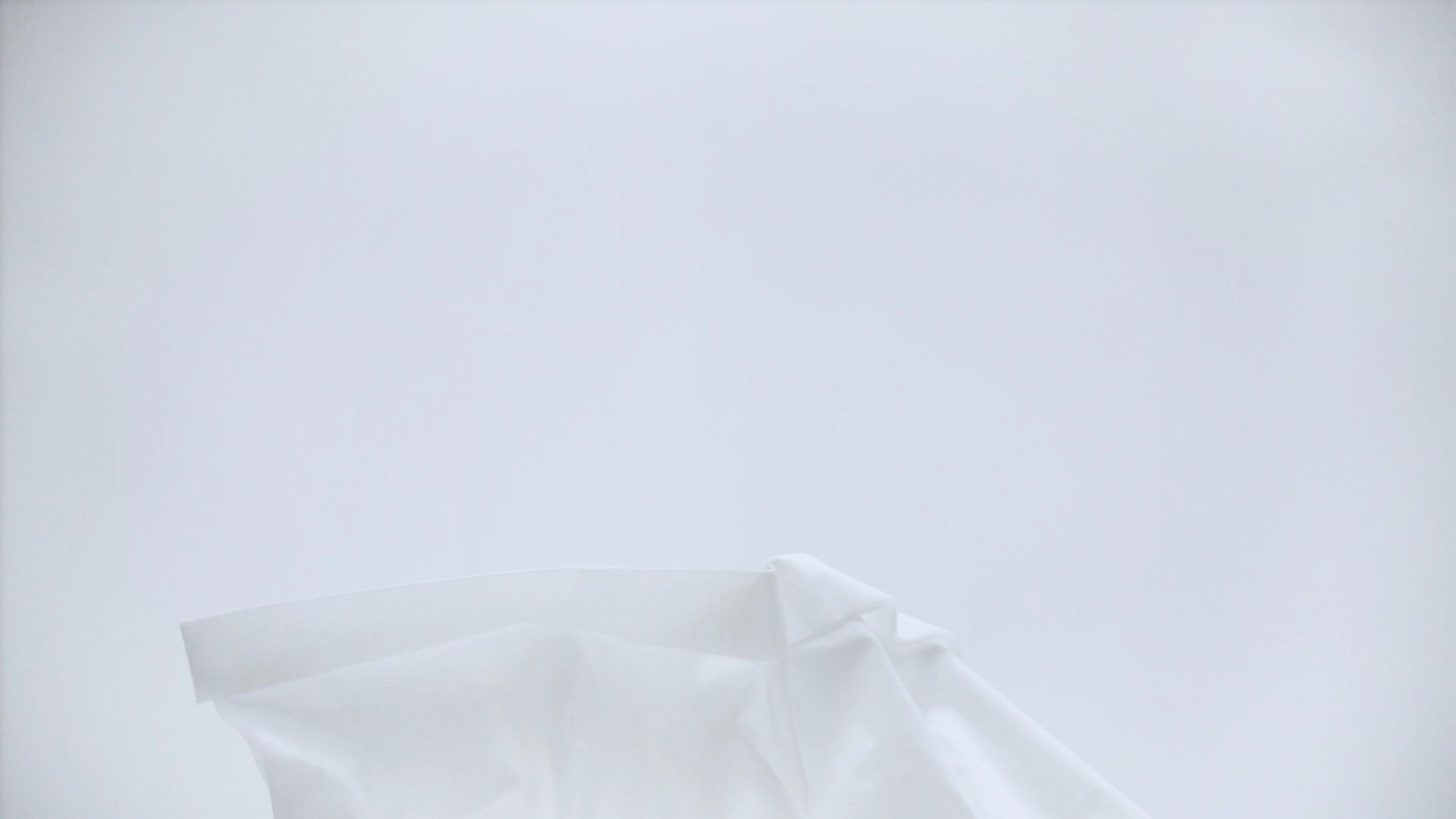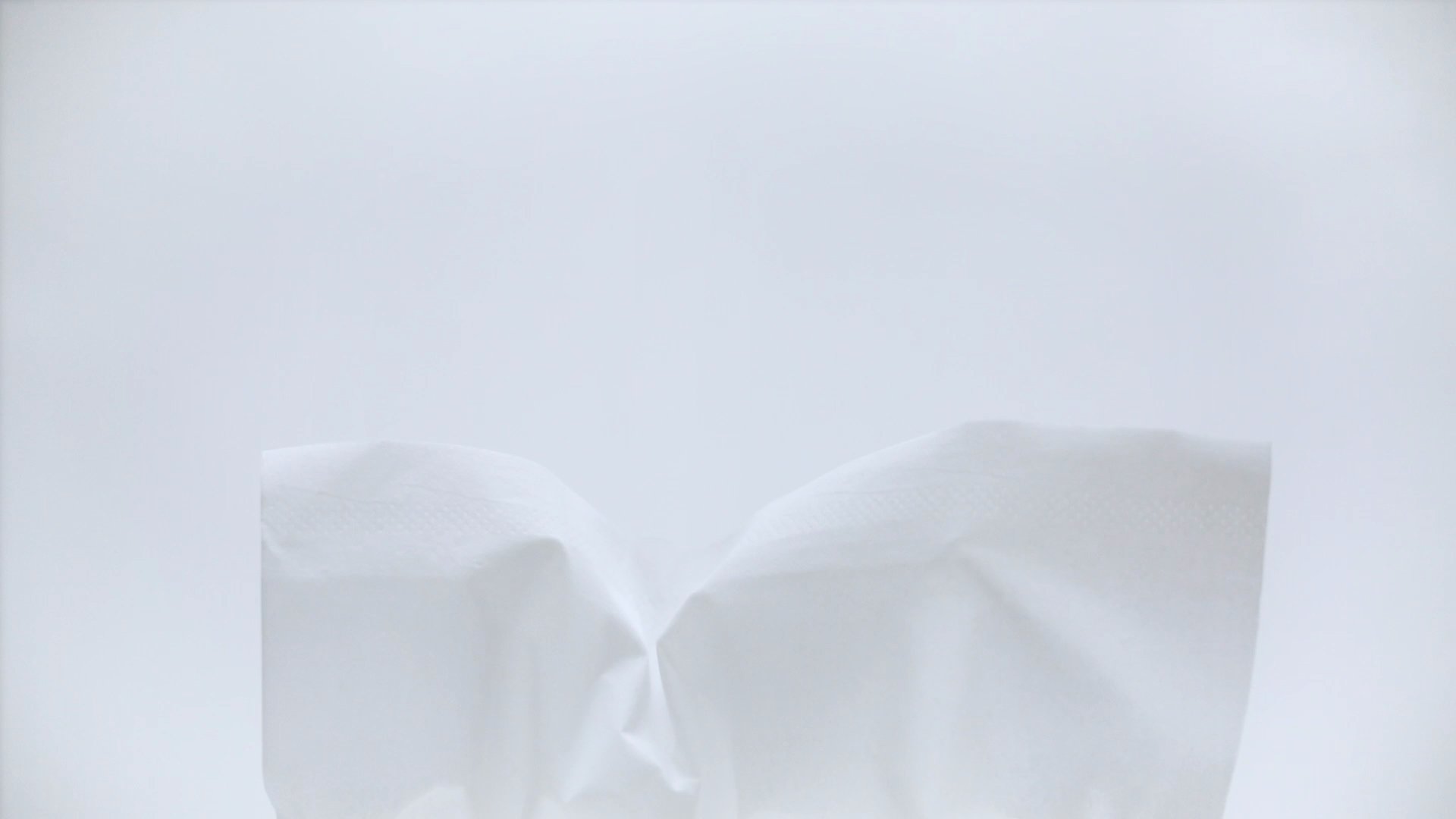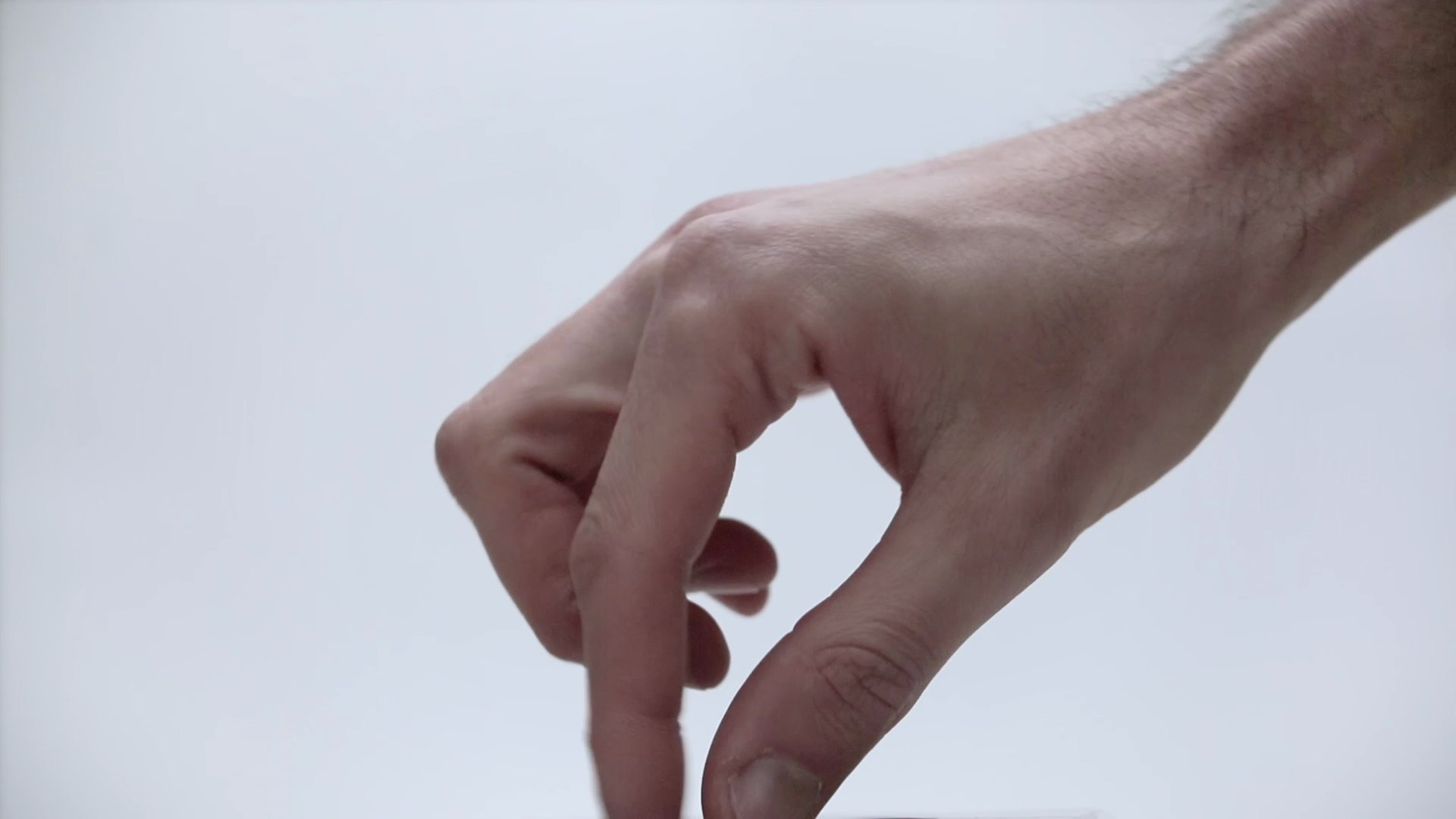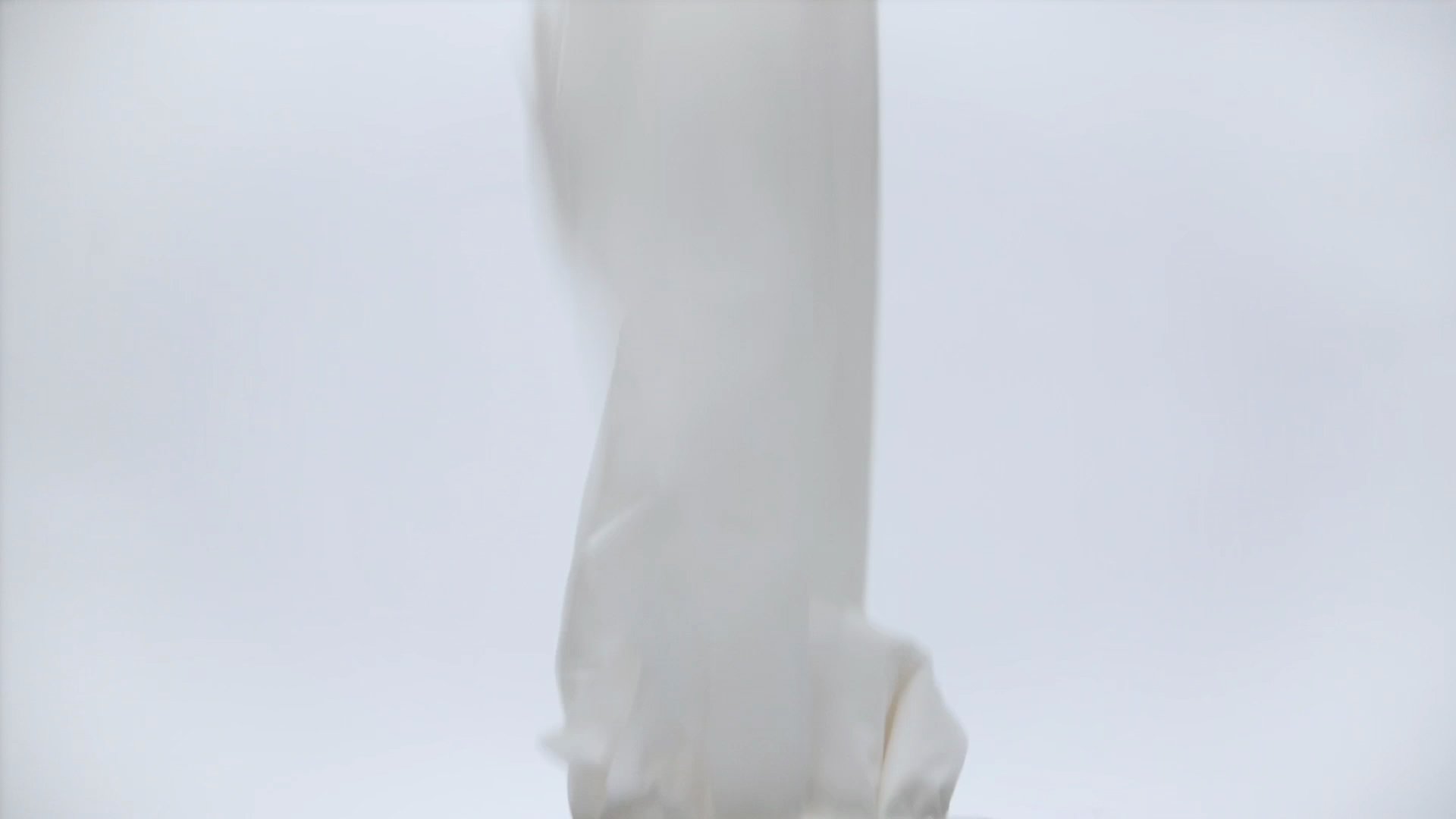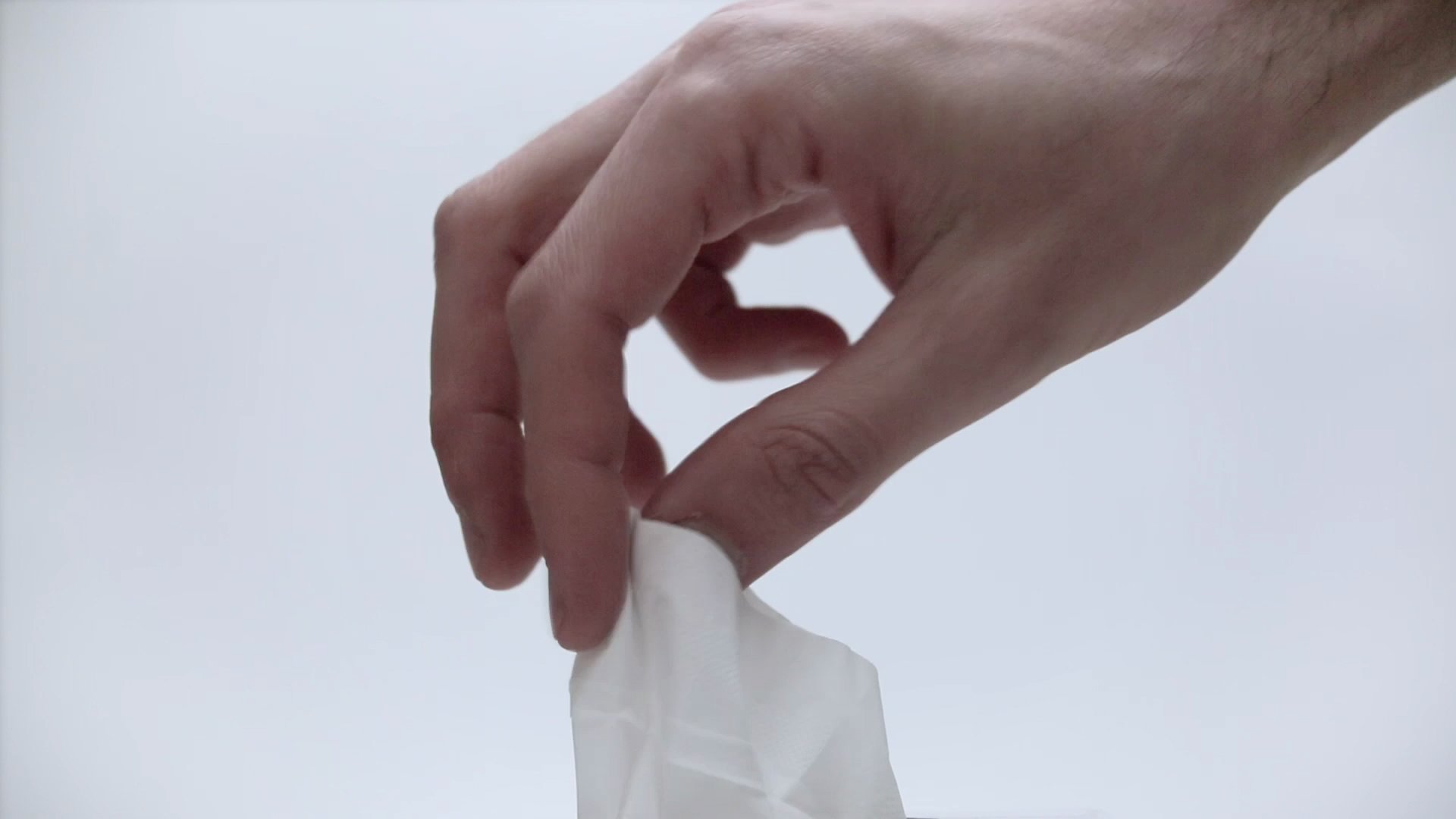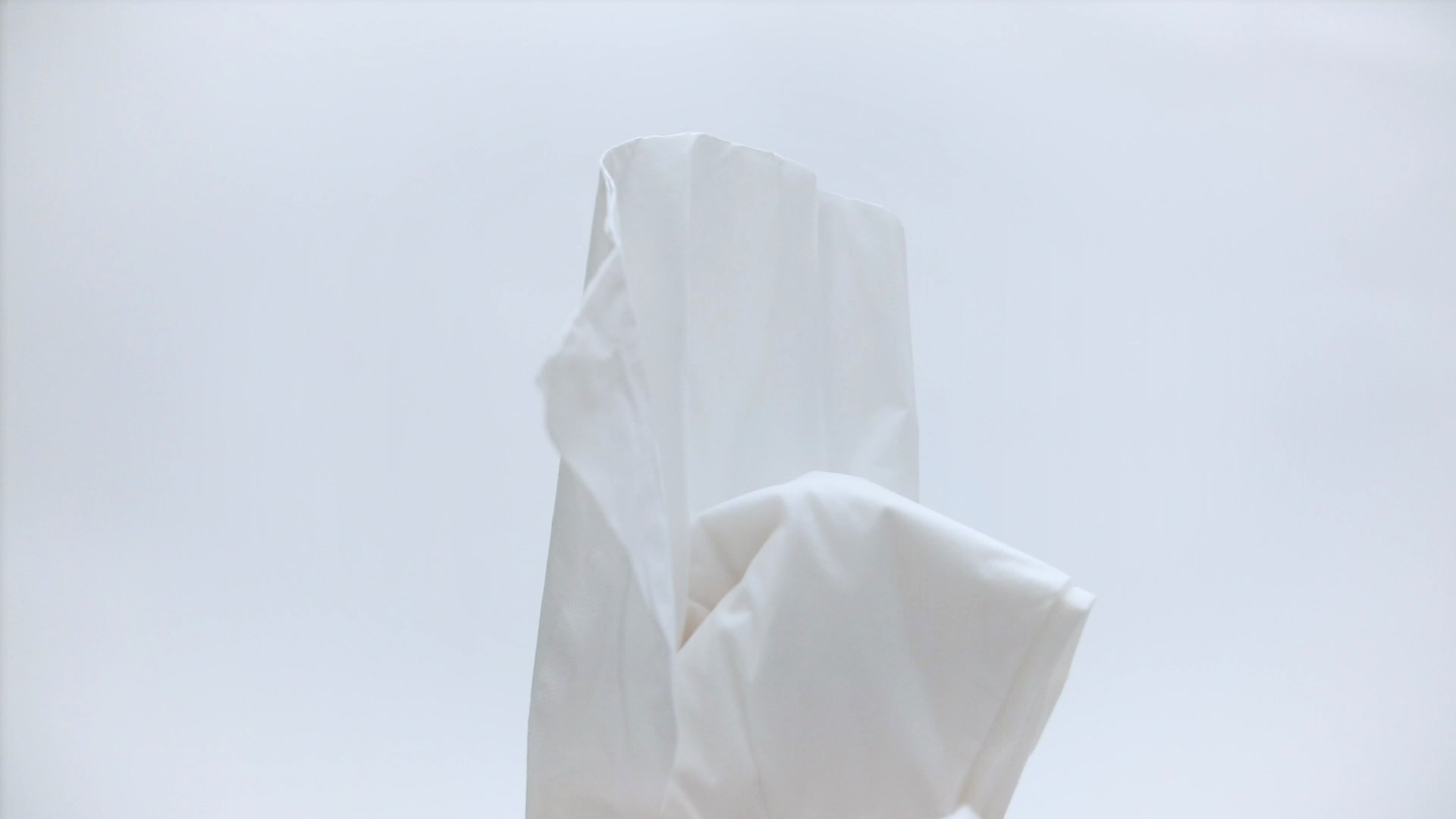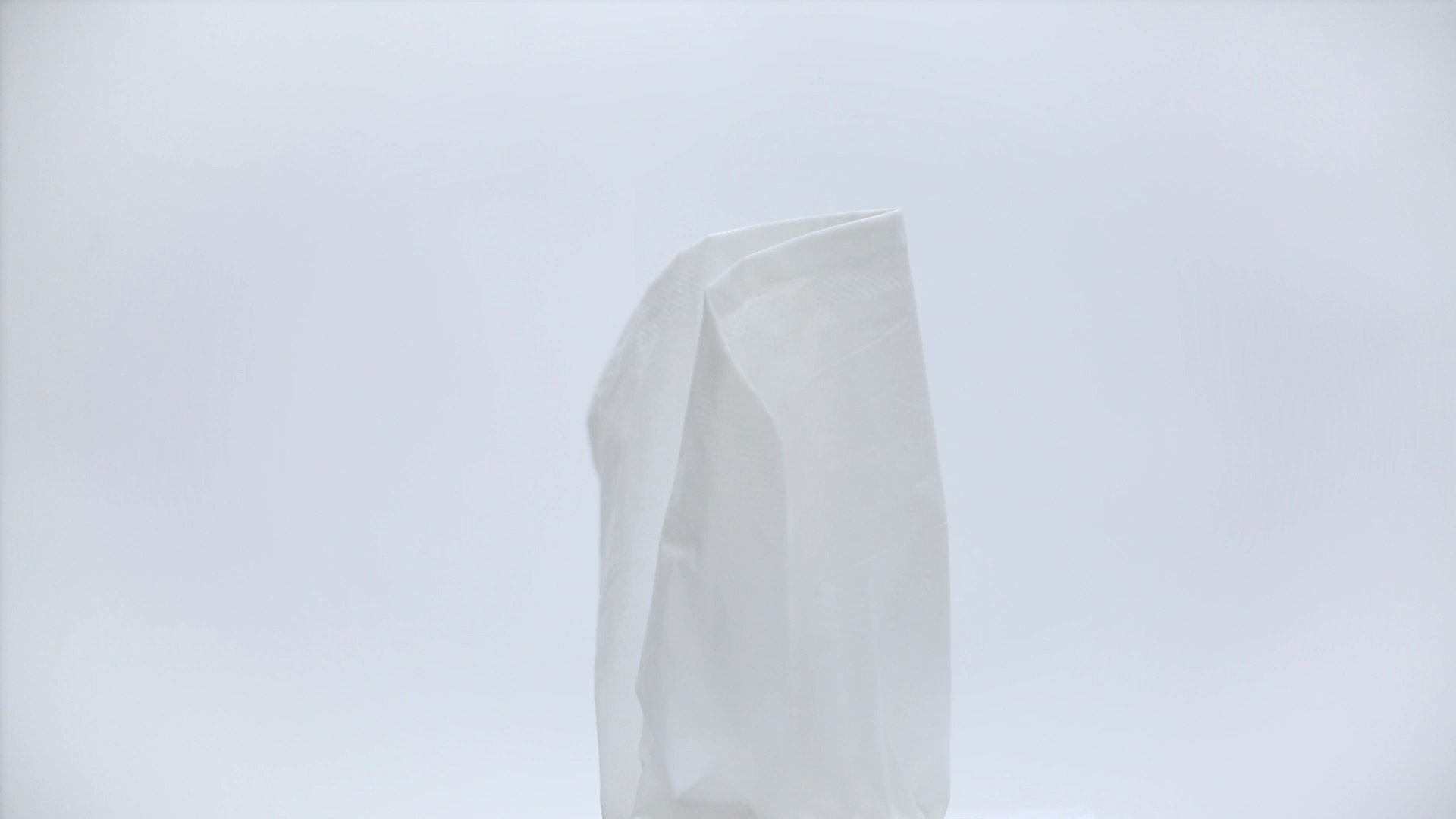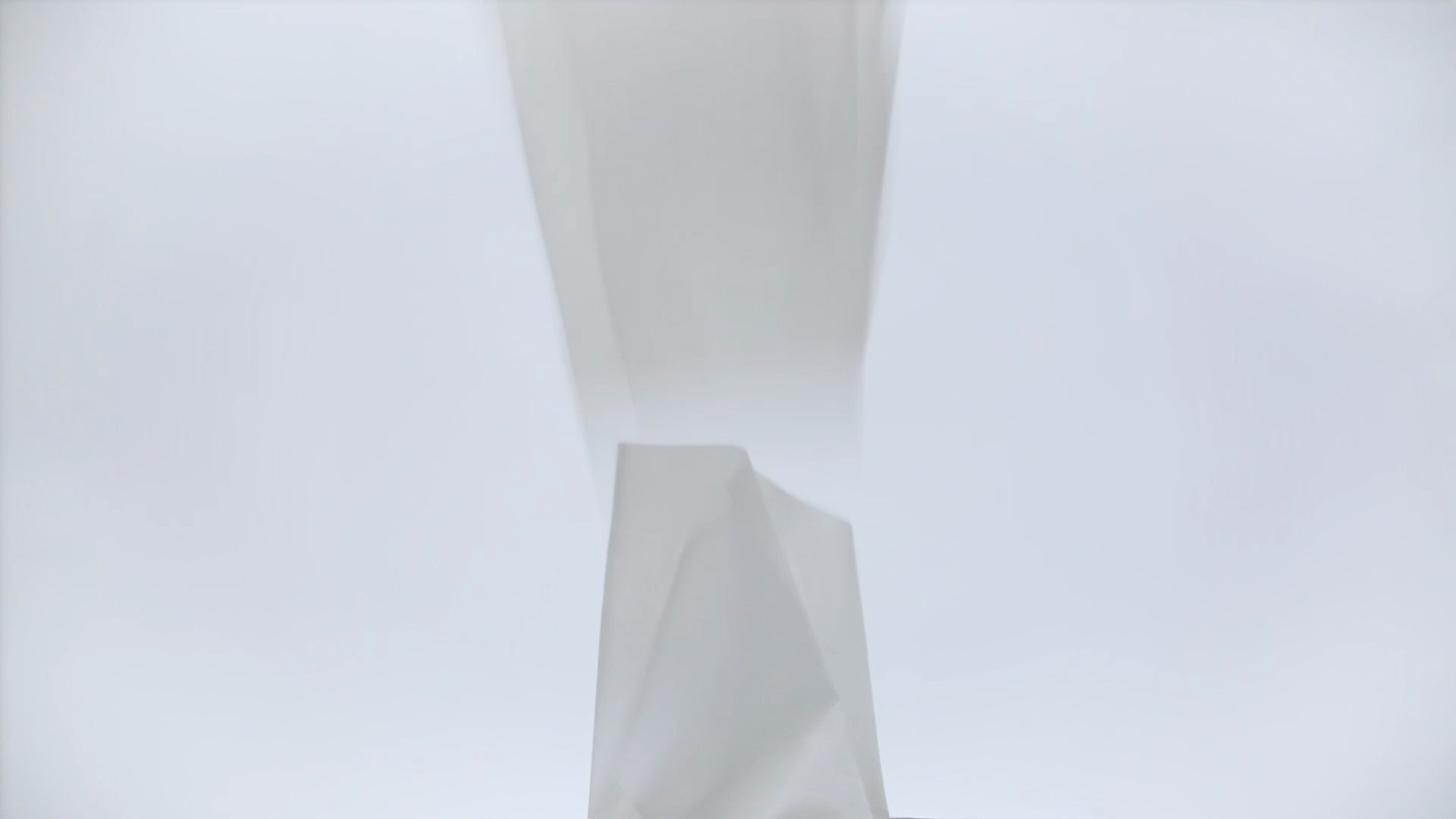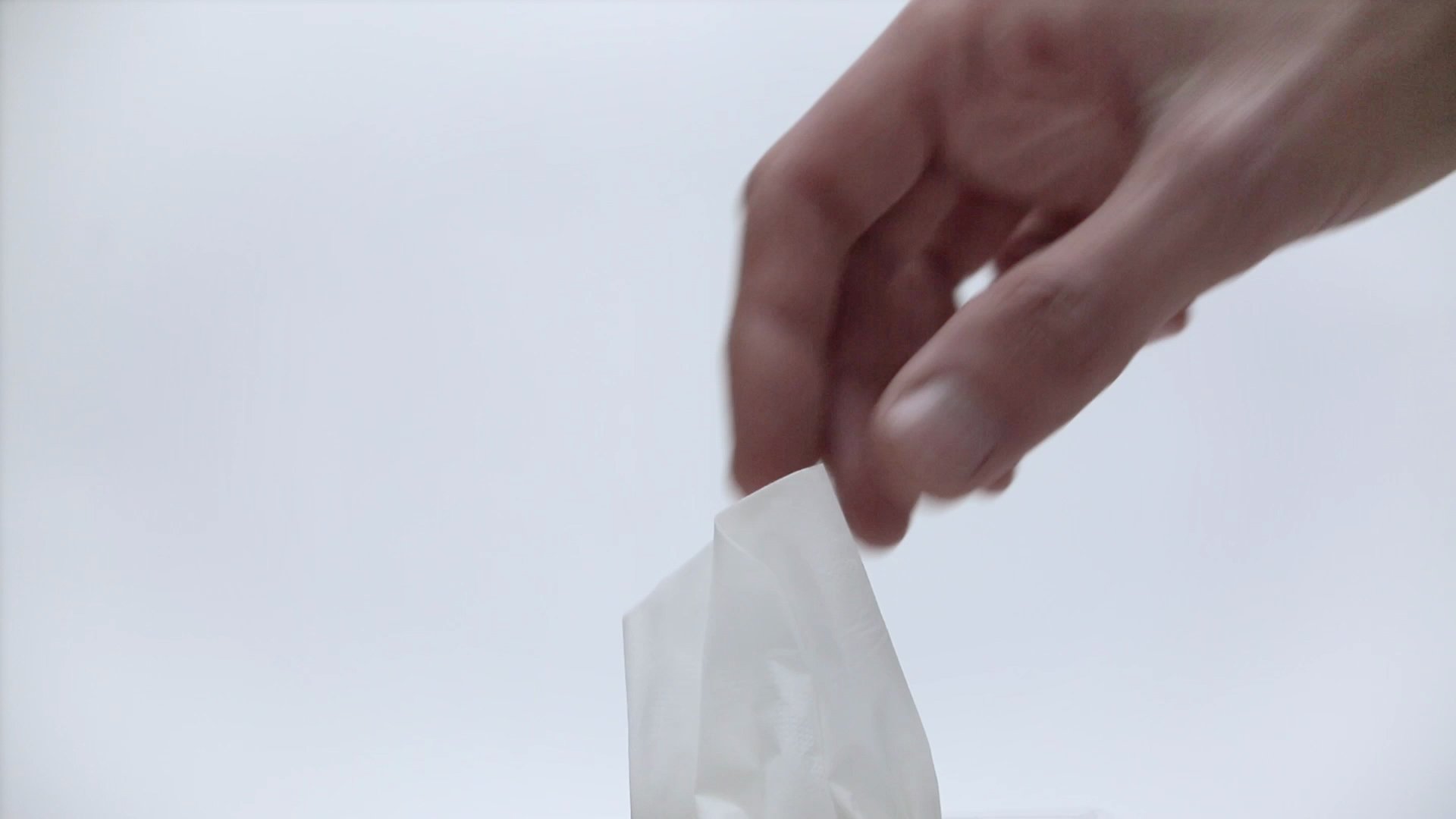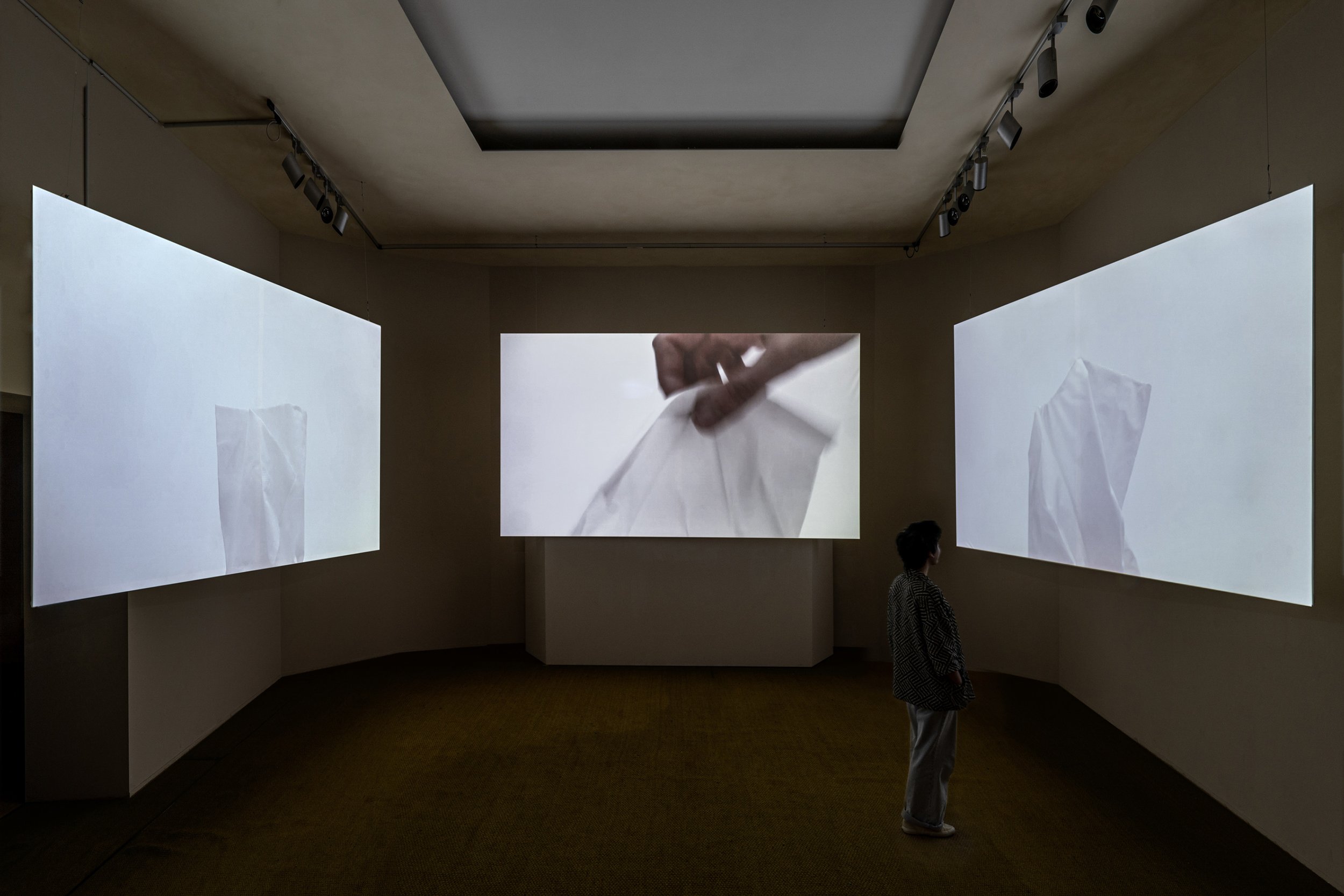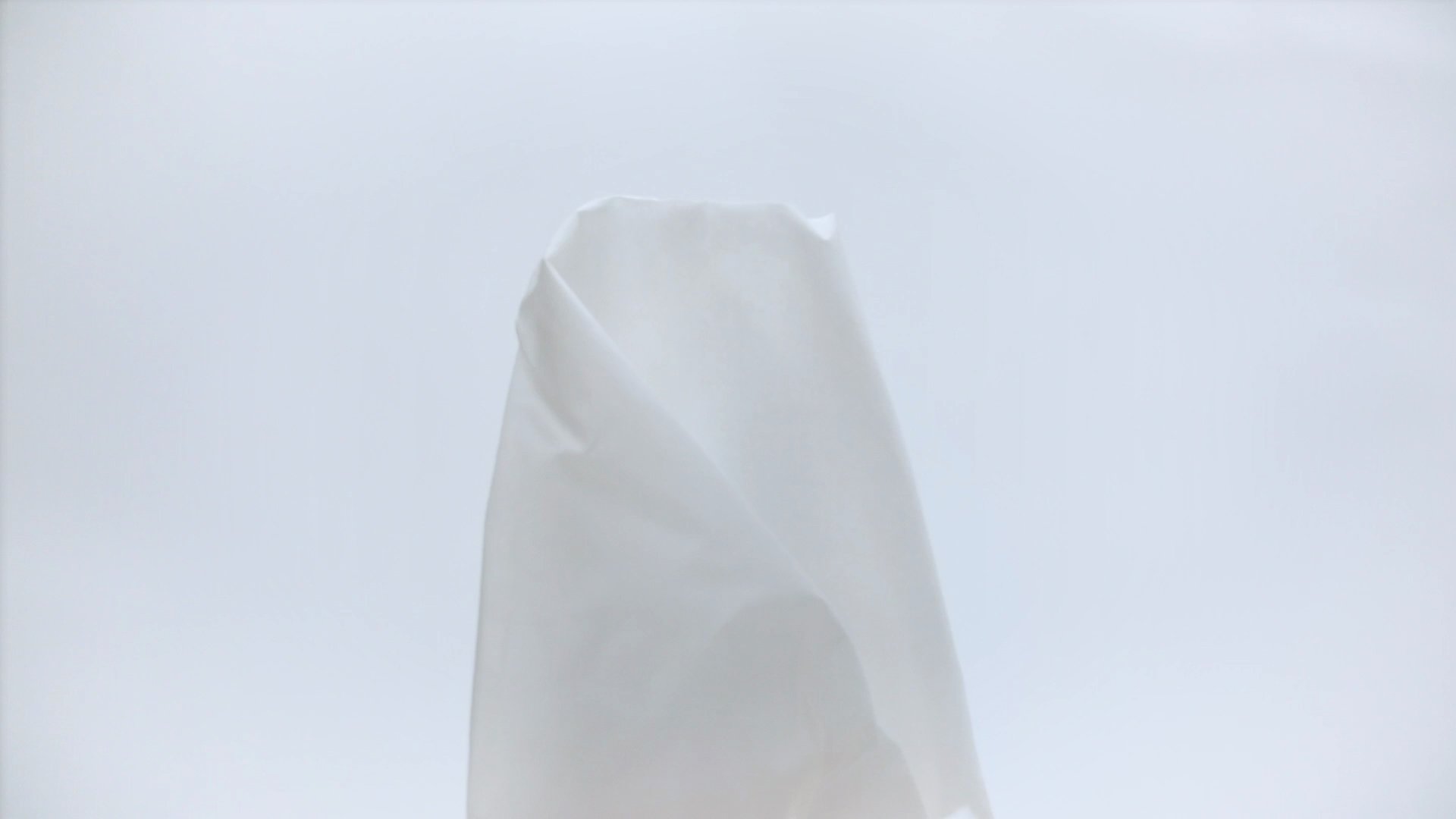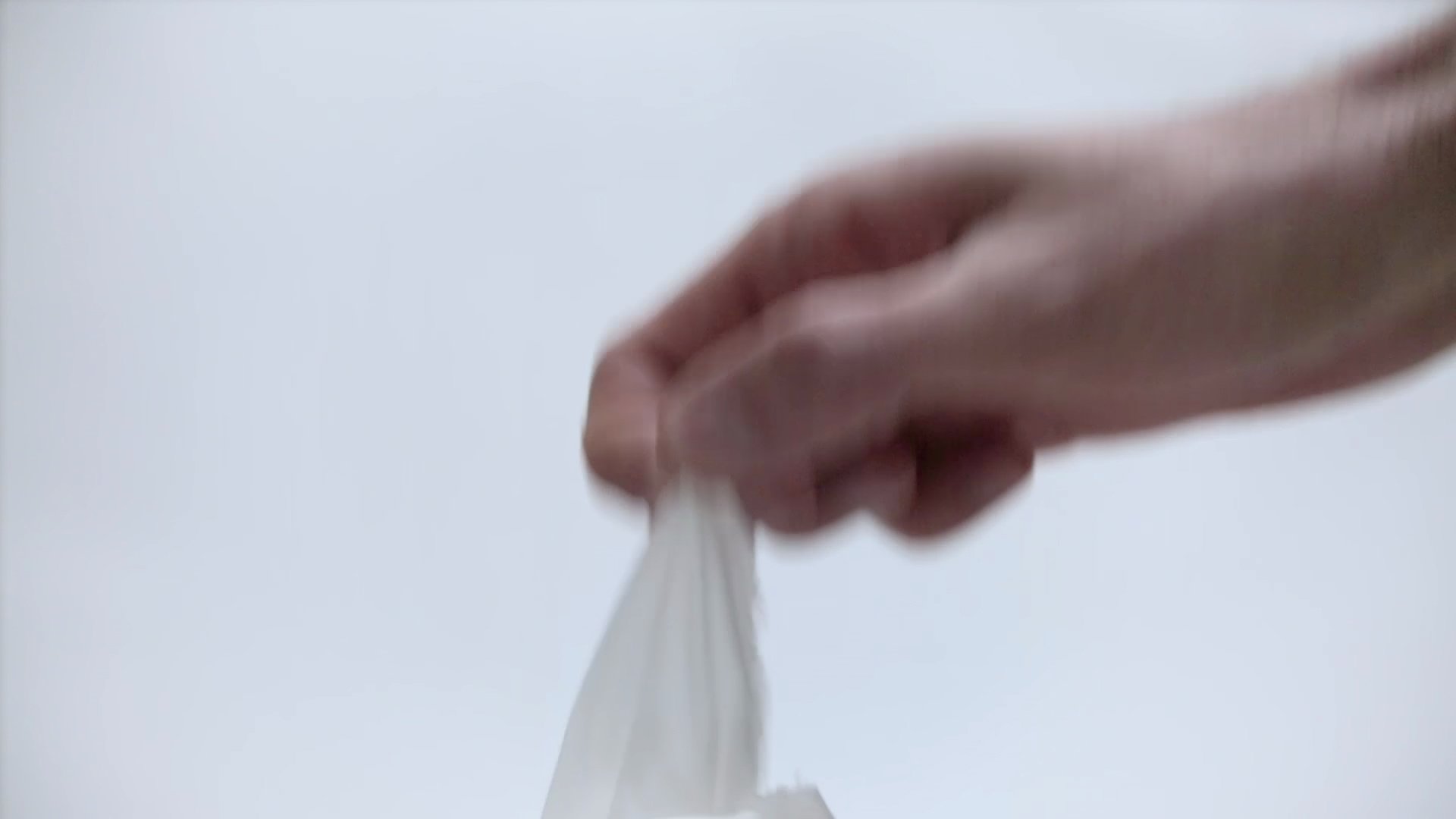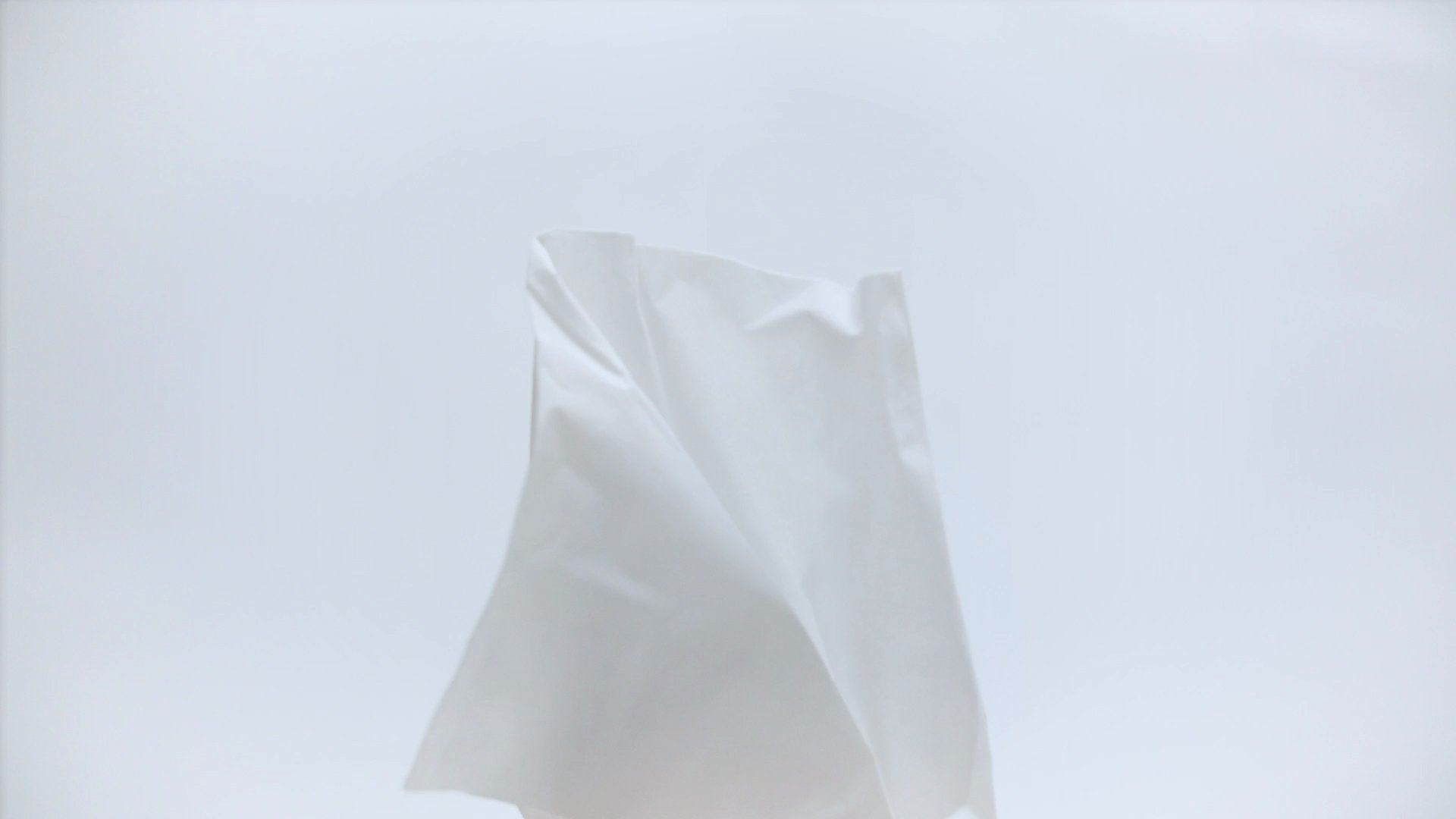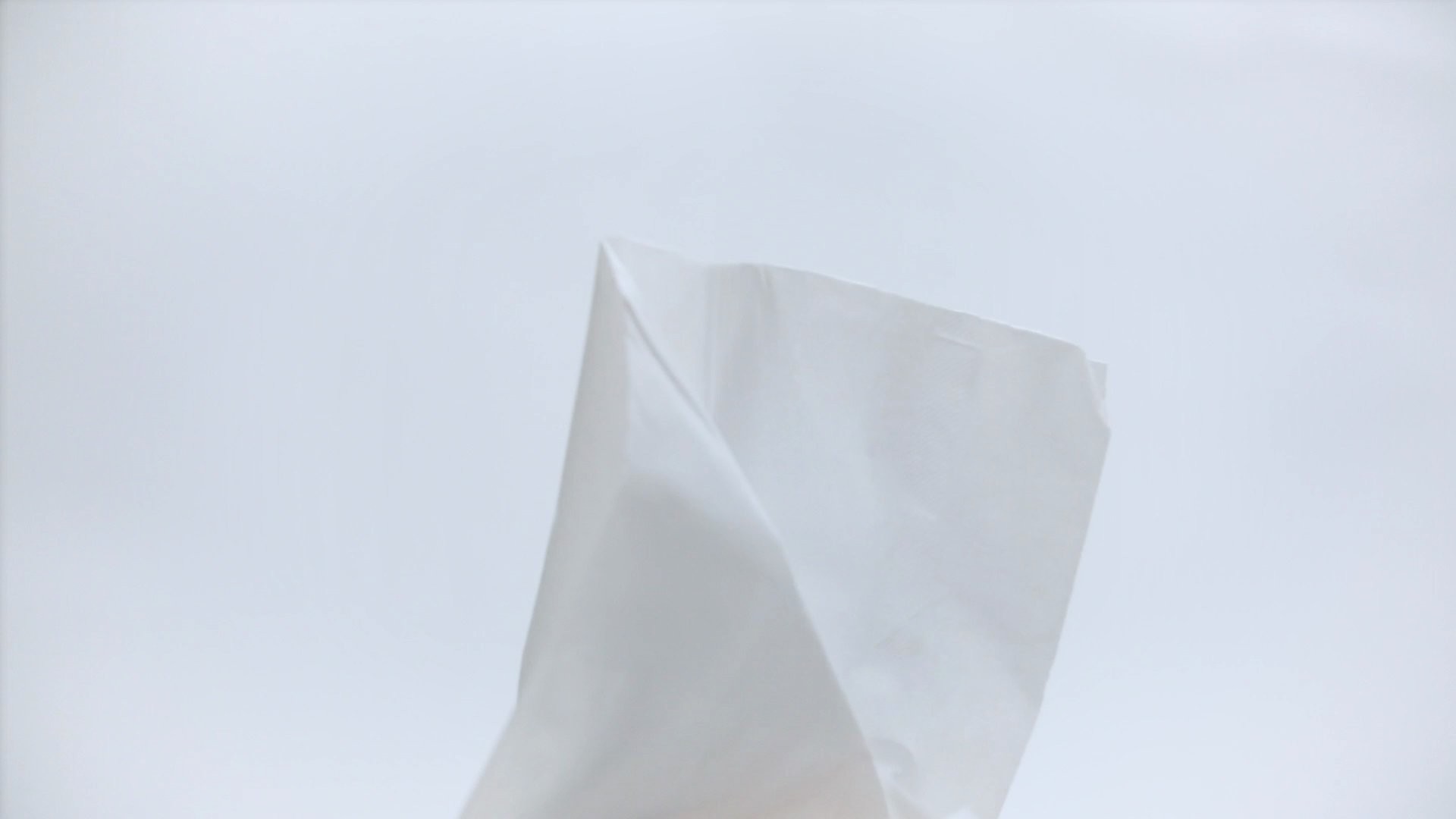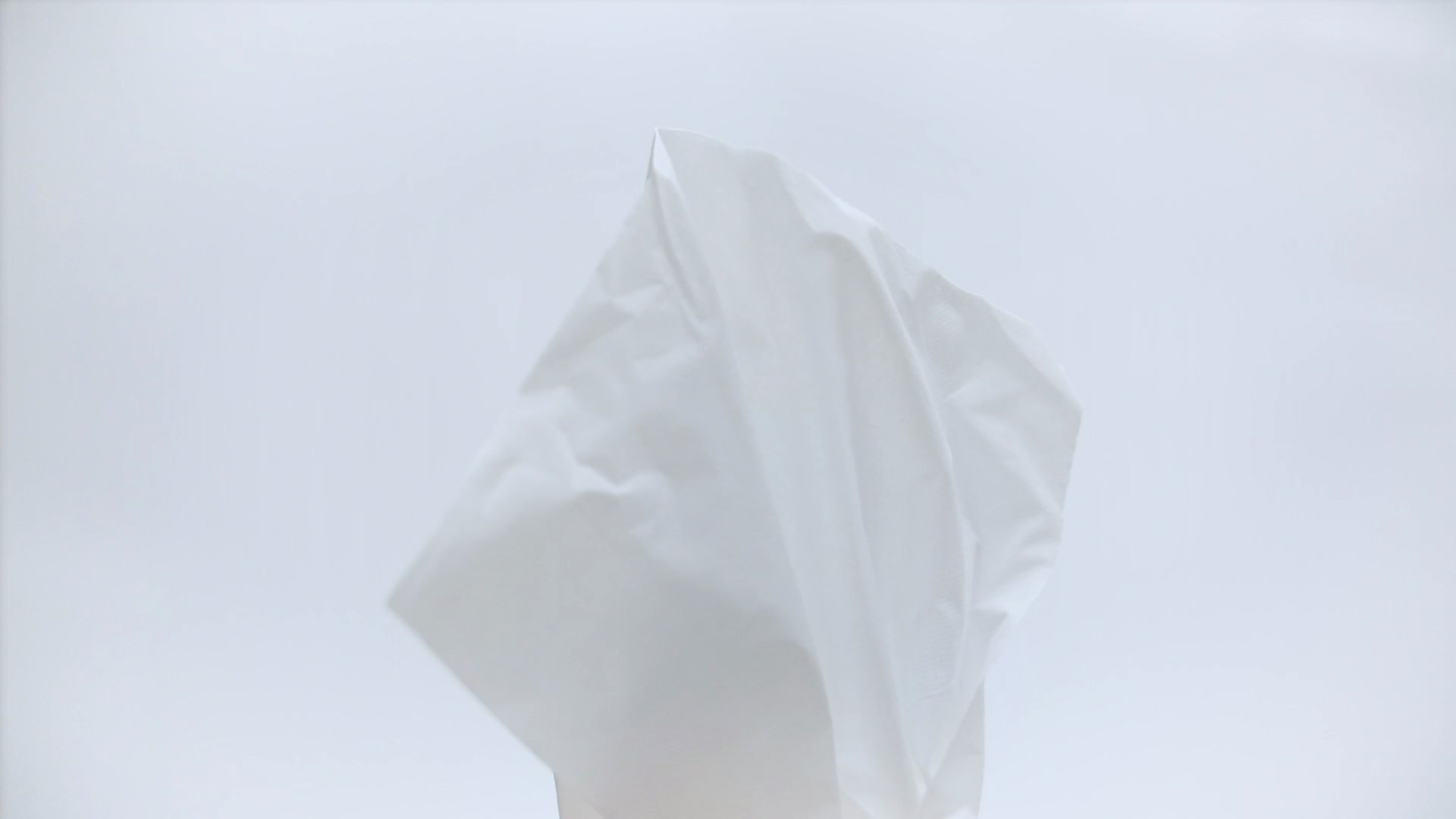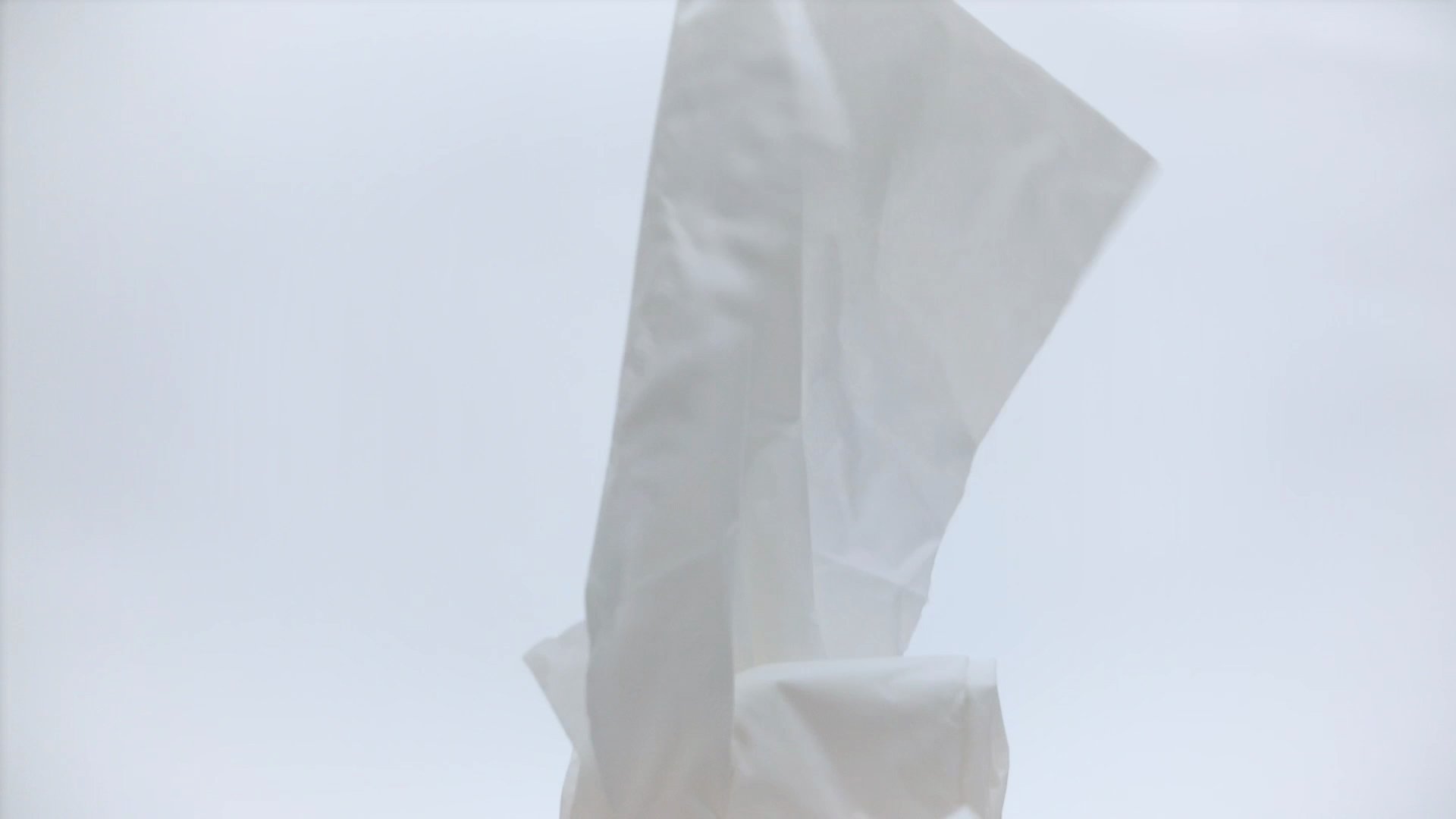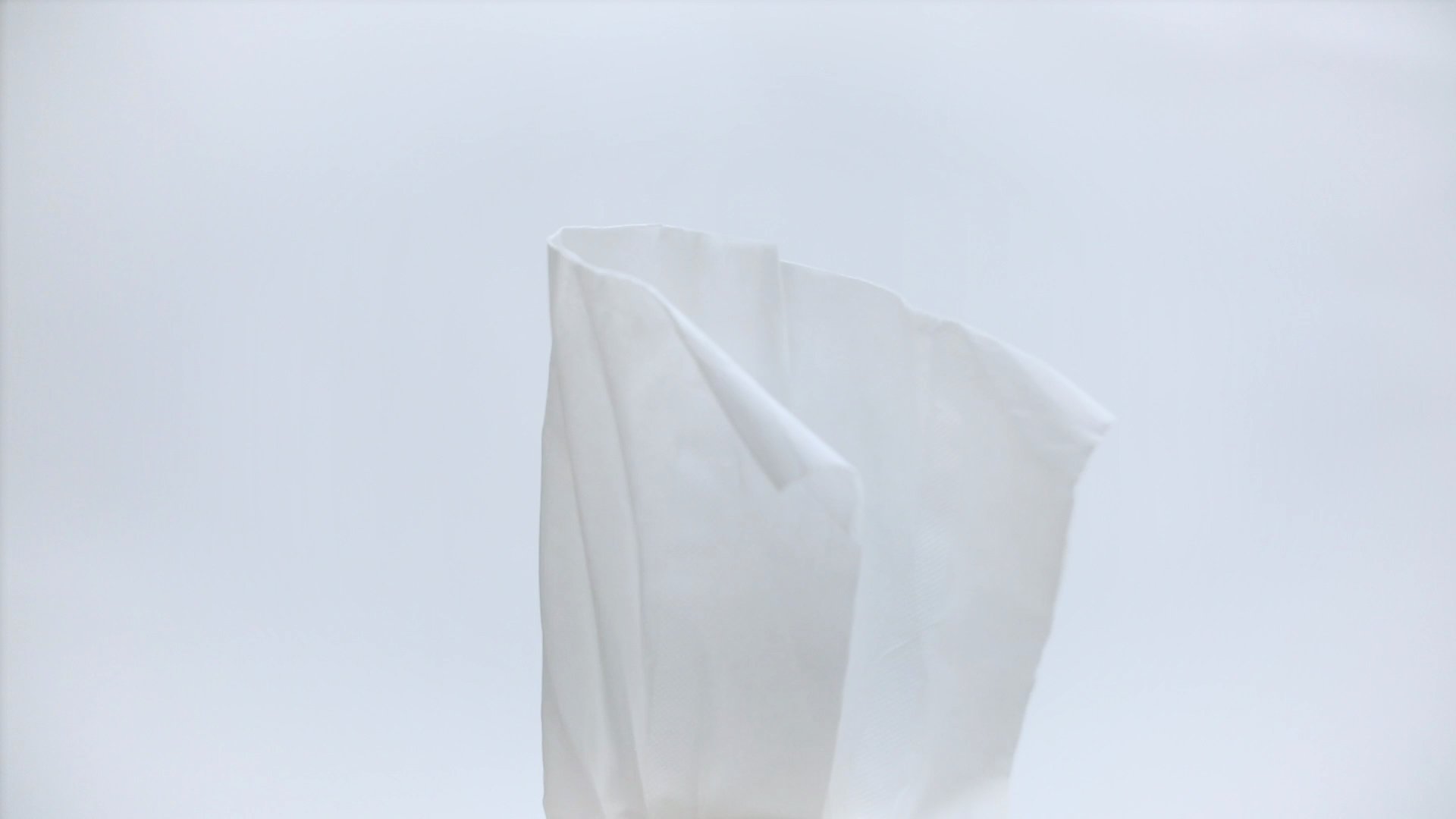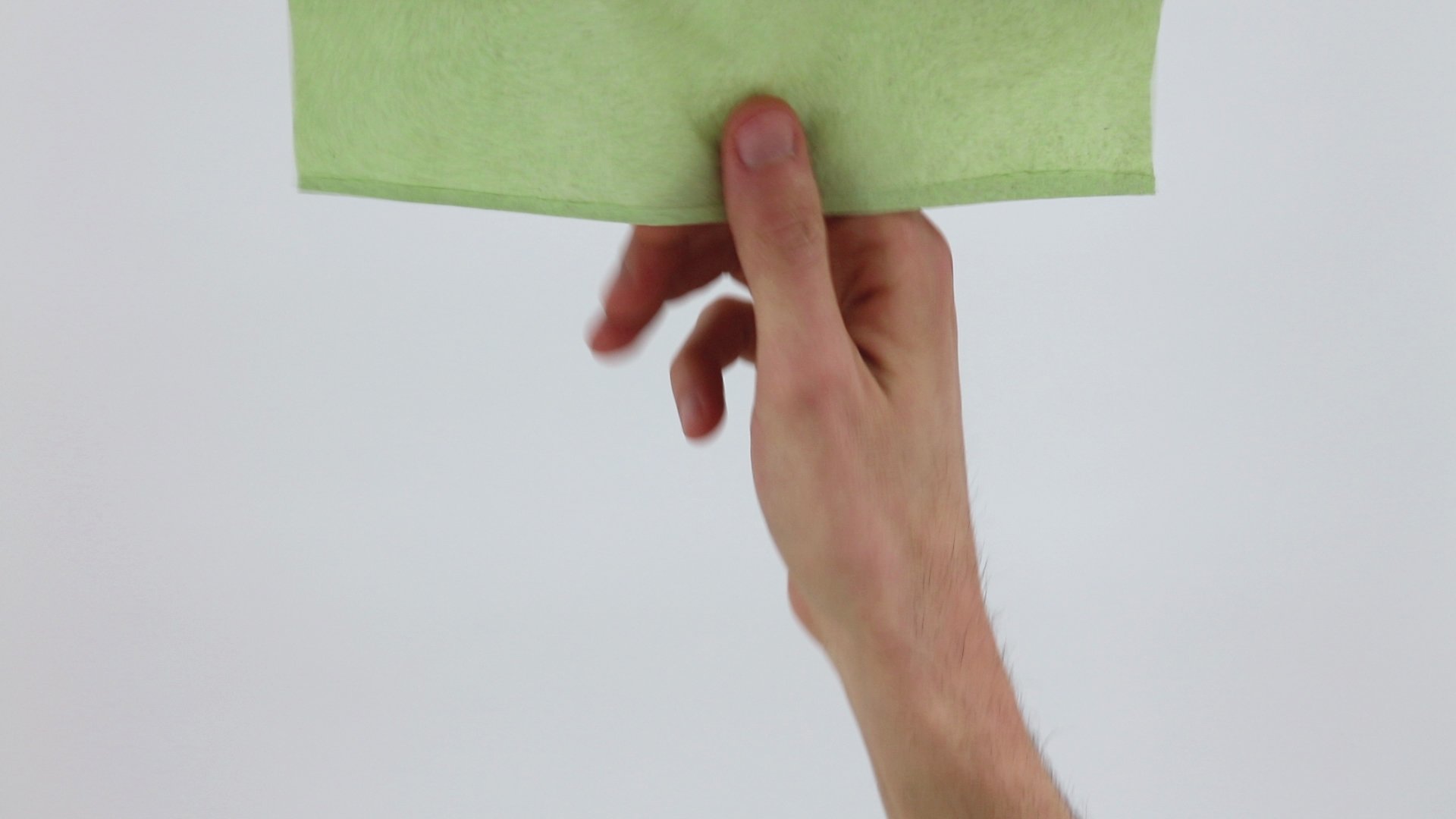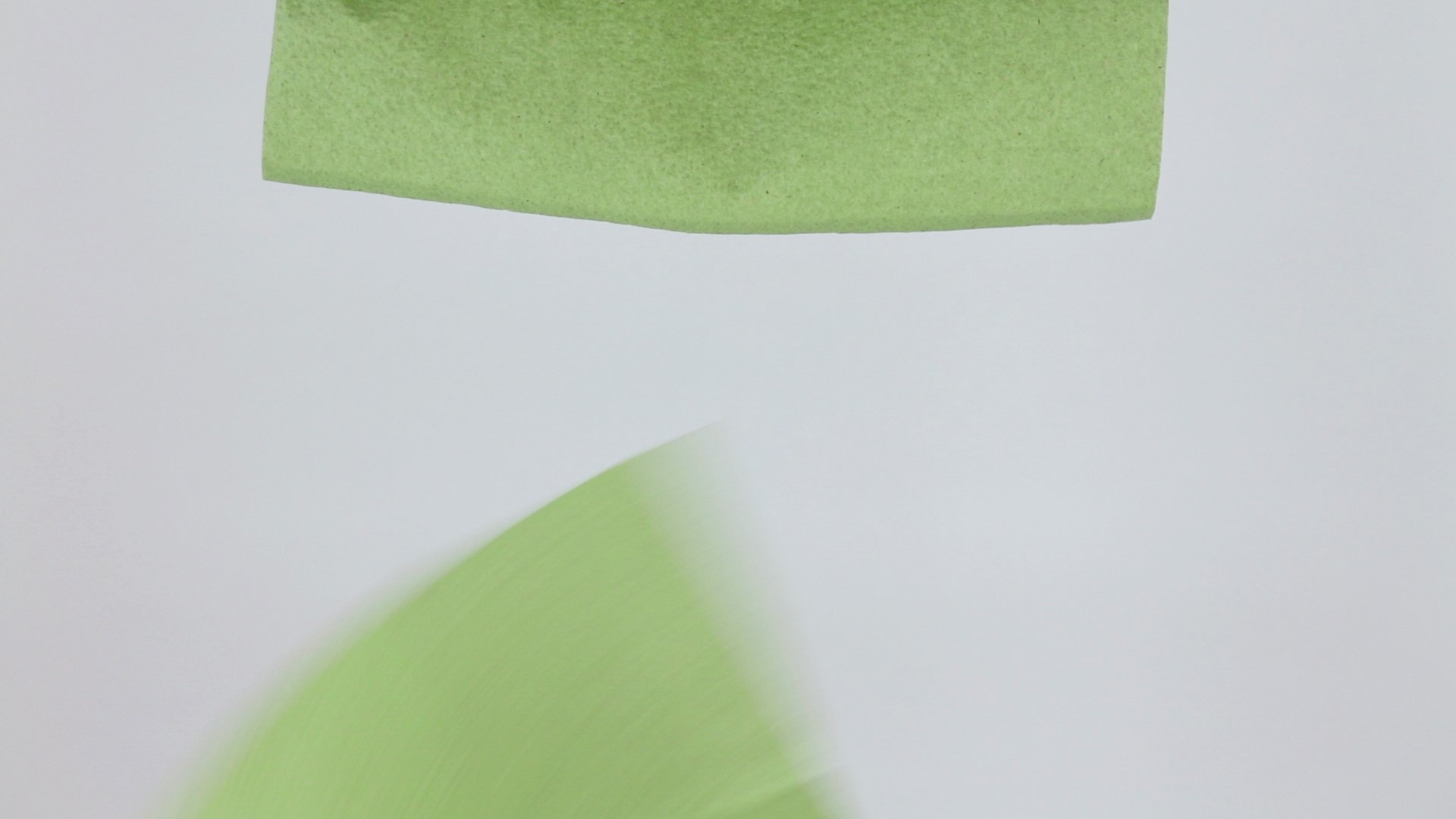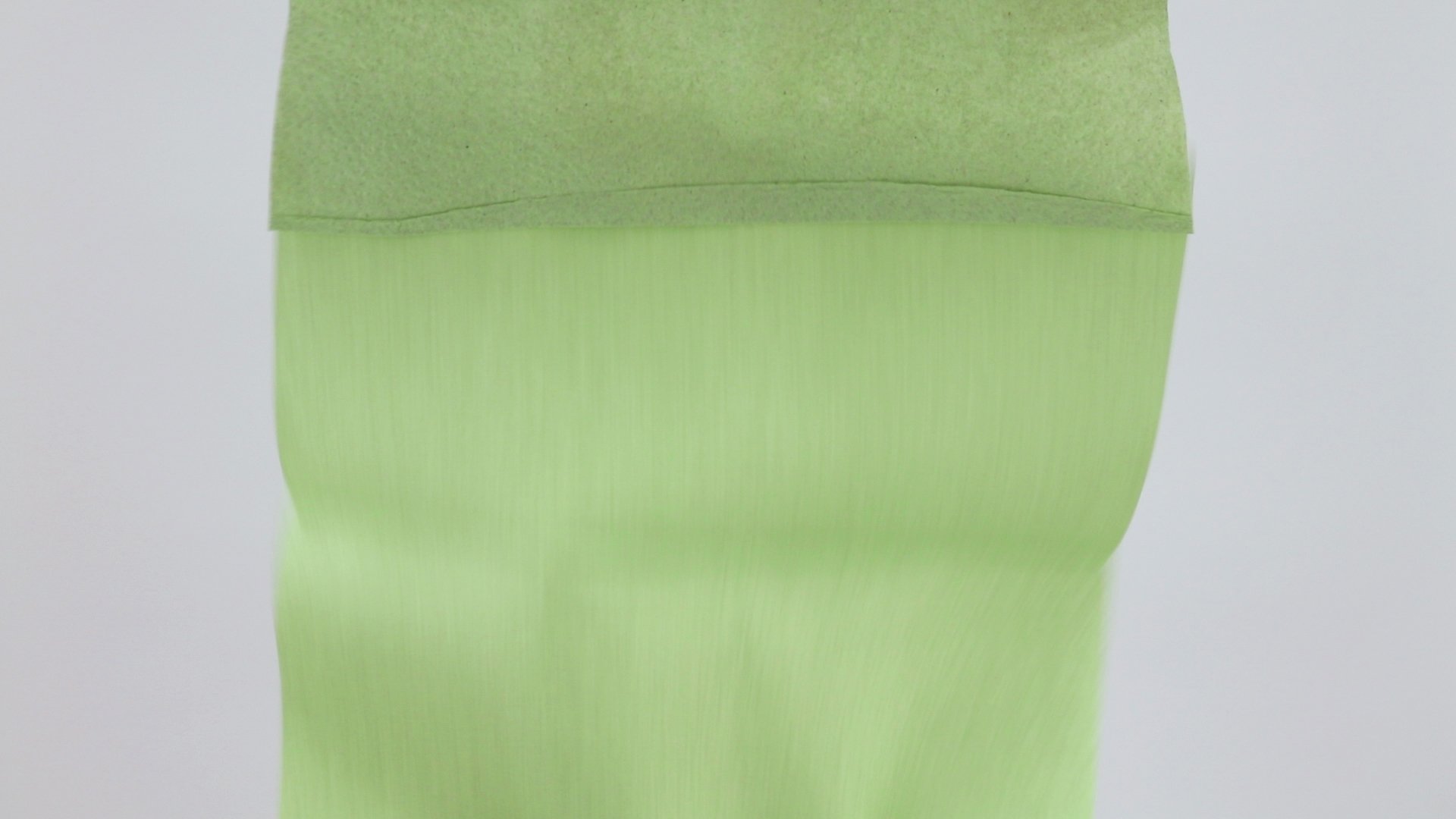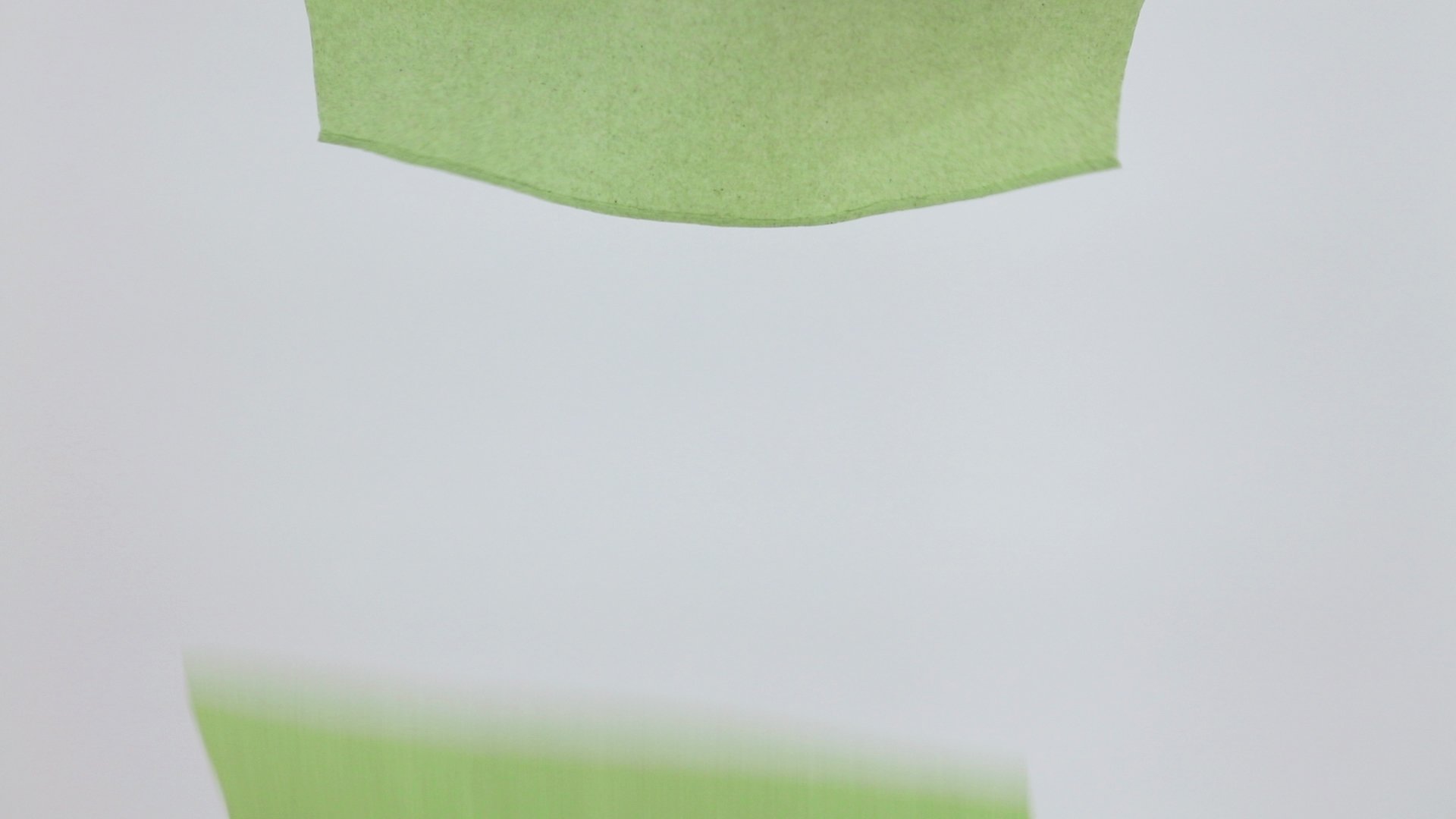Twofold, 30.03 - 06.05.2023
curated by Esther Biancotti & Jacopo Figura
Santa Maria della Scala, Siena, Italy
With the support of Fédération Wallonie-Bruxelles & Galleria FuoriCampo
still from Cycle I, 2020 — Video, sound (loop) — 6’01’’
Exhibition view, Twofold, 30.03 - 06.05.2023, Ex Refettorio, Santa Maria della Scala, Siena, Italy | © Ela Bialkowska, OKNOstudio
still from Cycle II, 2020 — Video, sound (loop) — 4’14’’
still from Cycle III, 2020 — Video, sound (loop) — 5’00’’
Exhibition view, Twofold, 30.03 - 06.05.2023, Museo archeologico, Santa Maria della Scala, Siena, Italy | © Ela Bialkowska, OKNOstudio
still from Cycle IV, 2023 — Video, sound (loop) — 5’33’’
L’esposizione si sviluppa su diversi livelli, materiali e simbolici. Al piano terra, nella sala del refettorio, sono proiettati a ciclo continuo tre video differenti che mostrano, ciascuno, una mano che estrae fazzoletti di carta da una scatola reiterando il movimento fino all’esaurimento degli stessi. Al piano inferiore, in una sala del Museo Archeologico, un video proietta l’analogo gesto compiuto estraendo asciugamani di carta con un movimento verso il basso. La forma della scatola, diversa in ciascuna proiezione, non è visibile ma si lascia intuire dalla silhouette del fazzoletto che ne viene fuori. Il fruscio della carta risuona nell’intero spazio, creando una disorientante esperienza sensoriale in cui la delicatezza della soffice carta contrasta con l’attrito desolatamente asciutto che l’estrazione del fazzoletto produce; la simultaneità delle tre proiezioni e la sovrapposizione dei suoni travolgono lo spettatore che non si trova mai di fronte allo stesso ritmo visivo e né sonoro.
La ripetizione dello stesso gesto dà vita a forme sempre diverse, tuttavia sempre uguali, come entità singole che trovano la propria – il proprio – fine nello scomparire di una forma che ne fa nascere un’altra in un ciclo continuo di apparizione e sparizione, di nascita e morte. Forme auto-generate nella misura in cui l’atto creativo si riduce ad uno strappo, un’eliminazione dal cui compimento emerge un nuovo inizio. La forma scompare con la violenza di una carezza energica e, dopo aver seguito i contorni del vuoto e del respiro provocato dal movimento, rimane congelata nello spazio e nel tempo, fragile ed effimera, per poi abbandonarsi dolcemente alla gravità ed essere sostituita da un’altra, in un atto libero nella catena della causalità.
Un processo che genera quasi una sovrapposizione delle forme del tempo, fra Kronos (indeterminato, quantitativo) e Kairos (il tempo dell’accadere) delineando una ciclicità che assume il valore assoluto della storia; da questa prospettiva, è possibile riconoscere una sorta di atto creativo (o della volontà) nel dettaglio delle mani protagoniste dell’azione - il soggetto agente o la causa; un elemento simbolico che trova la sua alterità immaginifica e materiale nelle storie raffigurate sulle pareti del vecchio ospedale, in quei gesti sapienti compiuti per scopi assistenziali o de-vozionali; una contestualizzazione che permette di evidenziare i molteplici piani di lettura che stimola l’iterazione di un gesto che solitamente trova la finalità nell’uso associato all’igiene, la cura e la consolazione; tutti aspetti che trovano risalto e sintesi tra le mura di questo antico edificio, dove la verticalità dello spazio si ritrova nel movimento ascendente delle mani, e le pieghe dei fazzoletti rimandano ai tessuti drappeggiati dipinti negli affreschi dell’o-spedale, per creare un’eco visiva che sottolinea ulteriormente i temi della nascita e della morte.
L’osservatore è invitato a contemplare la transitorietà della vita e la dualità dell’esistenza attraverso il breve comparire di fazzoletti e asciugamani, ma anche ad apprezzare la bellezza e la semplicità degli oggetti quotidiani, come le forme che questi casualmente assumono e la magia che si compie attraverso un’azione che si ripete incessantemente, sempre uguale, sempre diversa. E la poesia dello sguardo che la racchiude.
Jacopo Figura
English version :
The exhibition ranges across several different levels, both material and symbolic. On the ground floor, in the refectory, three different videos are projected in a continuous loop, each showing a hand pulling out paper tissues from a box, reiterating the movement until the tissues run out. On the lower floor, in one of the rooms of the Archaeological Museum, another video projects the same action, the extraction of paper towels, pulling in a downward motion. The shape of the box, which is different in each projection, cannot be seen, but is inferred from the silhouette of the paper handkerchief that is removed. The rustle of the paper re-echoes throughout the whole space, creating a disorienting sensory experience in which the delicacy of the soft paper contrasts with the forlorn, rasping sound made by the action of pulling out the tissue. The simultaneous nature of the three projections, and the overlapping sounds, bombard the spectator, who never finds themself confronted with the same visual rhythm, or sonorous rhythm. The repetition of the same action creates shapes that are ever-changing, but always the same, like individual entities that have their end – and find their purpose – in the disappearance of one shape that leads to the creation of another, in a continuous cycle of appearing and disappearing, birth and death. Self-generated forms, as the creative act is reduced to a tug, an elimination which, once accomplished, gives rise to a new beginning. The form disappears with the violence of an energetic caress, and, after having traced the outlines of emptiness and breath created by the movement, it remains frozen in space and time, both fragile and ephemeral, before then gently abandoning itself to gravity, and being replaced by another, in a free act in the chain of causality.
A process that generates something akin to overlapping forms of time, between Kronos (indeterminate, quantitative) and Kairos (the time of happening), delineating a cyclical pattern that acquires the absolute value of history. In this respect, it is possible to recognise a sort of creative act (or act of will) in the detail of the hands that execute the action – the subject as agent, or cause; a symbolic element that finds its imaginary and material otherness in the stories depicted on the walls of the old hospital, in those skillful movements executed for the purposes of attending to someone’s needs, or as devotional acts. This contextualization enables one to highlight the multiple levels of interpretation that are stimulated by the repetition of an action of which the end purpose lies in use associated with hygiene, personal care, and consolation, All these aspects find emphasis and synthesis between the walls of this ancient building, where the verticality of the space is matched by the rising motion of the hands, and the folds of the tissues echo the painted banners in the frescos of the hospital, to create a visual echo that further underlines the themes of birth and death.
The observer is invited to ponder the transient nature of life, and the duality of existence, by means of the brief appearance of paper tissues and towels. They are also invited to appreciate the beauty and simplicity of everyday objects, as well as the shapes that these happen to form, and the magic that is performed through an action that is repeated incessantly, always the same, always different. Along with the poetry of the gaze that captures it.
Jacopo Figura
